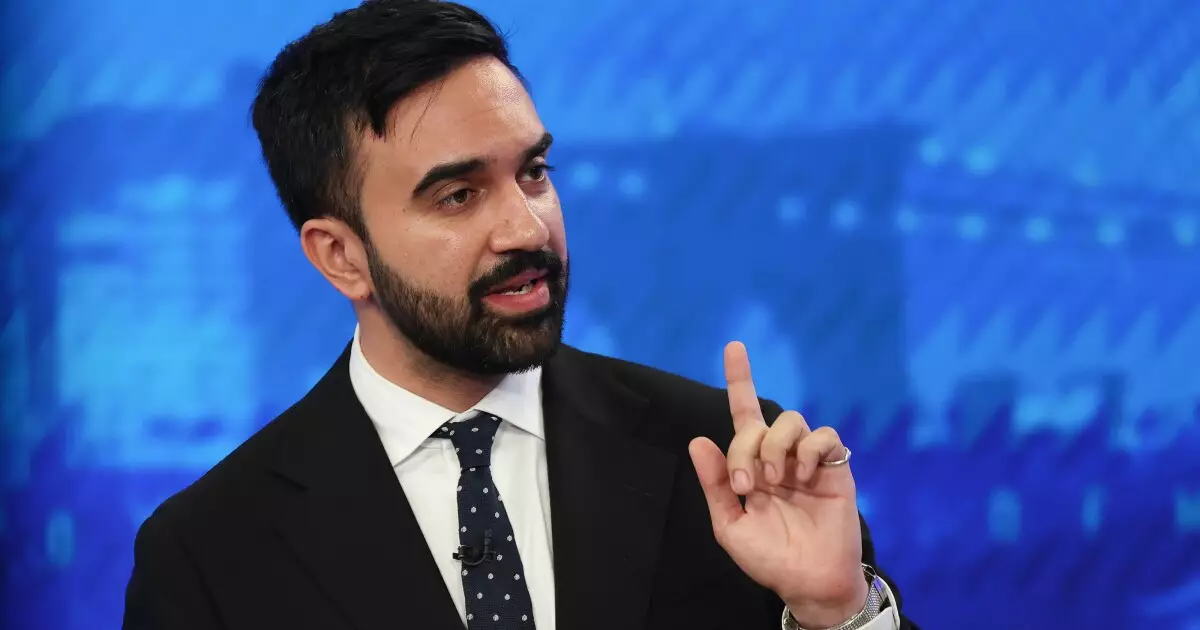In the midst of New York City’s ever-worsening affordable housing crisis, one politician is boldly striding forth with a significantly radical proposal. Zohran Mamdani, the democratic socialist and second-place candidate in the Democratic mayoral primary, has recently suggested that the city should borrow an additional $70 billion over the next decade to tackle the housing affordability calamity. While bold proclamations are often the hallmark of passionate campaigners, Mamdani’s approach raises critical questions about financial viability and the long-term implications of piling on debt like an overzealous college student racking up credit card bills.
Mamdani represents a wave of populism supported by the likes of Alexandria Ocasio-Cortez and Bernie Sanders, both of whom advocate for measures that often skirt the line between fiscal prudence and reckless abandon. His proposal, which comes on top of an already ambitious $25 billion allocation for affordable housing in the city’s capital plan, suggests an aggressive approach to what is undoubtedly a pressing issue. However, it behooves us to take a closer look at the economic ramifications of his plans.
Questionable Financial Strategies
New York City is currently living within the constraints of monumental debt. With an outstanding liability of approximately $104 billion as of June 2024, the city’s annual debt service hovers around $7.7 billion. Stripping away the curtains of idealism, Mamdani’s plan essentially calls for New York to ask for a hefty state-backed credit increase—something that might be perceived as audacious at best or delusional at worst. His projections do not clearly outline whether this fresh debt will reconfigure existing plans or merely add to an already precarious fiscal situation.
Howard Cure, a director of municipal bond research, has reviewed Mamdani’s plan and described it as “very ambitious.” This phrase, typically used to paper over reckless financial maneuvering, indicates that a significant increase in fixed costs during an era of high interest rates is nothing short of perilous. With rising debt levels, the city risks not only financial instability but also declining credit ratings, eroding public trust the longer these strategies are implemented without clear accountability.
Vision vs. Reality: The Housing Crisis Unscripted
Mamdani’s vision includes constructing 200,000 new rent-stabilized units and doubling capital spending for the city’s existing public housing. However, one cannot ignore the fact that mere construction does not solve underlying issues like zoning restrictions, bureaucratic red tape, and a dysfunctional housing ecosystem that drives costs through the roof. Instead of focusing solely on the quantity of new homes, functionality and quality must be prioritized.
Under the current administration, Mayor Eric Adams has sought to loosen zoning laws to promote more flexible development. While commendable, such measures may not suffice in a city where existing supply is but a threadbare cloak against a chorus of rising demand. The unfortunate reality is that the bulk of what Mamdani proposes may very well dissolve into statistical noise in the face of significant obstacles and logistical hurdles.
Taxation and Its Discontents
Everyone loves ideas until the bill comes due, and Mamdani is not immune to this reality. His plan includes raising corporate taxes and imposing a new 2% income tax on city residents earning over $1 million. While these proposals may resonate with the populists, they carry inherent risks. Increasing the financial burden on the very entrepreneurial spirit that helps the city thrive could drive businesses and wealthier residents to other locales. Competitive tax environments elsewhere may lead to a talent and capital drain that New York can ill afford.
Moreover, levying additional taxes requires not just legislative approval but also widespread public support, which is anything but guaranteed in a city that is deeply polarized on economic issues. The potential backlash from a frustrated populace that values economic freedom could undermine Mamdani’s political aspirations in the long run.
The Broader Political Implications
Mamdani’s proposals should be viewed not only through the lens of fiscal responsibility but also in terms of broader political rhetoric. The allure of democratic socialism often hinges on the promise of freedom from economic oppression. Yet, in practice, it flirts dangerously close to overreach that could stifle economic opportunity for a significant portion of the population.
With electoral support behind him, Mamdani stands at a precipice—ready to either redefine how we confront the housing crisis in New York or drive the city into deeper economic malaise. The stakes are high: a misstep could tilt the balance from ambitious reform to chaotic financial ruin, underscoring the urgent need for a balanced and pragmatic approach to governance. As we follow this unfolding narrative, the critical eye must remain trained on the sustainability of such grand ambitions.

